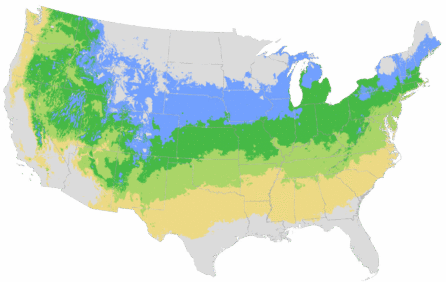You're growing in this Zip Code:
Change LocationDiscover Plants for Your Area
Shaina Japanese Maple
Acer palmatum 'Shaina'
Retailers Near You
No Retailers found within 100 miles of your zipcode
Be Inspired: How to Use this Plant
| Bloom Time | Inconspicuous; prized for foliage. |
|---|---|
| Deciduous/Evergreen | Deciduous |
| Special Features | Dramatic Foliage Color, Easy Care, Compact Form |
| Problems/Solutions | Deer Resistant, Rabbit Resistant, Tolerates Urban Pollution |
| Growth Rate | Slow |
| Growth Habit | Rounded |
| Landscape Use | Container, Poolside |
| Design Ideas | The smaller size of Japanese maples, and when they bear season long foliage color become a most valuable tree for home landscapes. No other tree conveys the Asian or Japanese garden character to a landscape whether traditional or a spare zen-like modern design. But these maples also belong in natural groves of much larger trees because the shelter of high canopies ensure they attain their richest foliage hues. Their preference for acidic soils also make them perfectly adapted to grow within the influence of needled evergreens. Smaller stature is excellent for foundation beds around homes and in naturalistic drifts of landscape. They are ideal for urban gardens where plants are protected by buildings from wind and sun. Maples even do well in large containers for porch, patio or terrace. |
| Flower Color | Purple |
| Foliage Color | Red |
| Foliage Fall Color | Red |
| Companion Plants | Azalea (Azalea); Hosta (Hosta); Japanese Forest Grass (Hakonechloa); Rhododendron (Rhododendron); Astilbe (Astilbe) |
| Care Instructions | Provide slightly acidic, well-drained soil; shelter from drying winds. Avoid harsh afternoon sun exposures in hot summer areas. Mulch to keep root zone cool. Water deeply, regularly during first few growing seasons to establish an extensive root system; reduce frequency once established. Apply slow-release fertilizer in early spring. |
| History | A mutation or sport of A. palmatum 'Bloodgood' discovered at Greer Gardens in Eugene, Oregon. Introduced in 1988. This species may be the most widely bred of the entire Acer clan. First A. palmatum plants are credited to Carl Thunberg who classified them after his return to Europe from Japan in 1820. Although called Japanese maple, the species is native to China and Korea as well. It's dark red coloring identifies this plant among the Atropurpureum group, first developed when breeding began after 1857. The maple family Aceraceaeholds just two genera named from the old European name for maples. There are about 200 species from northern temperate rergions around the world. |
| Lore | This maple and its cultivars are essentials of the Japanese tea gardens. Its vivid leaves are considered to be the flowers of autumn. Maple is balanced in spring with the flowering cherries, which together are the quintessential symbols of seasonal cha |
| Bloom Time | Inconspicuous; prized for foliage. |
|---|---|
| Deciduous/Evergreen | Deciduous |
| Special Features | Dramatic Foliage Color, Easy Care, Compact Form |
| Problems/Solutions | Deer Resistant, Rabbit Resistant, Tolerates Urban Pollution |
| Growth Rate | Slow |
| Growth Habit | Rounded |
Retailers Near You
No Retailers found within 100 miles of your zipcode
Retailers Near You
No Retailers found within 100 miles of your zipcode
Buy Online
We cannot currently ship this product to your zip code.
About Us
We have been pioneers and craftsmen in the art of growing plants for nearly
100 years. Since our founding in Southern California by Harry E. Rosedale, Sr.
in 1926, we have been absolutely dedicated and obsessed with quality.
We have been pioneers and craftsmen in the art of growing plants for nearly 100 years. Since our founding in Southern California by Harry E. Rosedale, Sr. in 1926, we have been absolutely dedicated and obsessed with quality.






